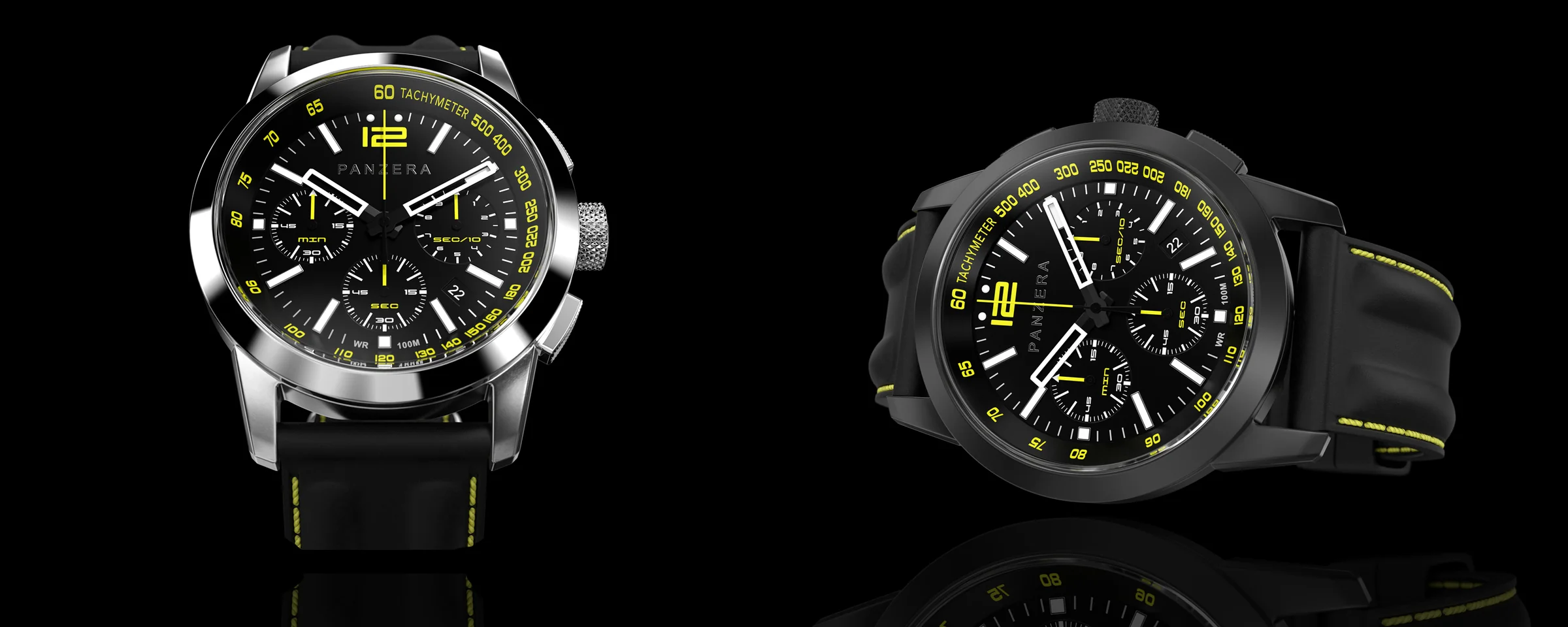
L'HISTOIRE DES MONTRES DE SPORT AUTOMOBILE
Peut-être qu'aucun autre sport ne nécessite une précision temporelle aussi grande que le monde des sports mécaniques, où une fraction de seconde peut faire la différence entre la gloire et la défaite. (Lors du récent Grand Prix d'Autriche de F1, Leclerc a devancé Verstappen à la ligne d'arrivée de seulement 1,5 seconde – après plus de deux heures d'une lutte acharnée.)
Il n'est donc pas surprenant que les montres et la mesure du temps jouent un rôle essentiel dans le sport automobile. Depuis les débuts de ce sport, les chronomètres – puis plus tard les montres-bracelets chronographes – ont été utilisés pour la mesure du temps. Au fil des décennies, on peut souvent voir des pilotes avec une « montre de course » attachée à leur poignet, devenue presque aussi indispensable que le casque.
Sans plus tarder, jetons un œil à deux des montres les plus emblématiques portées sur la piste.
HEUER MONACO
Heuer – à ne pas confondre avec la marque moderne TAG Heuer – était sans aucun doute la marque de montres la plus en vue dans le monde des sports mécaniques. Dans les années 1930, Heuer a commencé à fabriquer des chronomètres de tableau de bord tels que le Master Time, le Monte Carlo et l'Autavia, qui a connu une seconde vie en tant que montre-bracelet en 1962.
Il y avait ensuite la Heuer Carrera, un chronographe simple à remontage manuel (nommé d'après la course de rallye Carrera Panamericana) qui ornait les poignets de pilotes légendaires tels que Niki Lauda, Bruce McLaren et Ayrton Senna.
Cependant, la montre de course définitive est sans doute la Heuer Monaco, la montre carrée frappante portée par Steve McQueen dans le film Le Mans de 1971. Introduite en 1969, la Monaco fut une pionnière sur deux fronts.
Premièrement, son Calibre 11 (développé en collaboration avec Breitling, Hamilton-Buren et le fabricant de mouvements Dubois Depraz) fut l'un des premiers chronographes automatiques à arriver sur le marché, aux côtés du mouvement El Primero de Zenith et du Calibre 6139 de Seiko.
Un chronographe automatique était considéré comme un tel exploit que le PDG de l'époque, Jack Heuer, a consciemment choisi de positionner la couronne de la Monaco à gauche, afin de rappeler aux clients que la montre ne nécessitait pas de remontage manuel.
Deuxièmement, la Monaco était également remarquable pour être la première montre carrée étanche.
Bien que les montres rectangulaires et rondes soient monnaie courante, les montres carrées étaient loin d'être la norme, et encore moins les montres étanches.
Conçue par le designer de boîtiers Piquerez, la boîte carrée utilisait un joint carré, au lieu des joints ronds qui étaient la norme dans les montres carrées à l'époque.
Jack Heuer a acquis le brevet pour le design, et la Monaco est née.

À bien des égards, la Heuer Monaco était une rebelle. À une époque où la plupart des marques horlogères (y compris Rolex) fabriquaient de petites montres habillées rondes de 34-36 mm, Jack Heuer et sa marque éponyme ont décidé de prendre le chemin moins fréquenté et de créer un monstre carré imposant de 39 mm. C'était une approche radicale de l'horlogerie et du design, et encore aujourd'hui la Monaco est considérée comme une pièce non conventionnelle.
ROLEX COSMOGRAPH DAYTONA
Si la Heuer Monaco détient le titre de montre de course la plus emblématique, alors la Rolex Daytona est sans aucun doute la montre de course la plus populaire au monde.
Nommée d'après la ville de course Daytona en Floride (où se trouve le siège de la NASCAR), la Rolex Daytona a été introduite en 1963 comme l'offre chronographe de la marque. Une deuxième série a été lancée en 1988 avec le mouvement automatique Zenith El Primero, tandis que la troisième (et actuelle) série lancée en 2000 a mis à jour la Daytona avec le mouvement chronographe maison de Rolex.
La Daytona était initialement impopulaire lors de son lancement, avec peu de pilotes la portant sur la piste.
Cependant, il y avait une exception notable – l'acteur/pilote automobile Paul Newman, qui portait une Daytona avec un cadran exotique offert par sa femme Joanne Woodward.

La montre portait l'inscription « Drive Carefully Me ». Lorsqu'elle a été vendue en 2017 lors de la vente aux enchères Winning Icons de Phillips New York, elle a atteint une somme astronomique de 17,8 millions de dollars US.
La vente record a propulsé la Daytona au rang de star horlogère, consolidant sa place comme l'une des montres les plus recherchées.
PANZERA TIME MASTER CHRONOGRAPH
Cependant, les deux montres mentionnées précédemment coûtent une petite fortune – plus des montres de luxe que des montres de tous les jours. Pour ceux qui recherchent un chronographe de course abordable, le Panzera Time Master Quartz Chronograph est un excellent choix.

Il est doté d'un verre saphir résistant aux rayures, d'une étanchéité de 100 mètres, et d'un mouvement chronographe Miyota incroyablement précis capable de mesurer jusqu'au 1/20e de seconde.
Il possède même des références sur piste – le médaillé olympique et des Jeux du Commonwealth John Steffensen porte la collection Time Master dans le monde du sport automobile – depuis sa participation aux manches du Porsche Michelin sprint challenge et de la Carrera Cup, jusqu'à la récente course d'endurance Bathurst 12 Hour.

